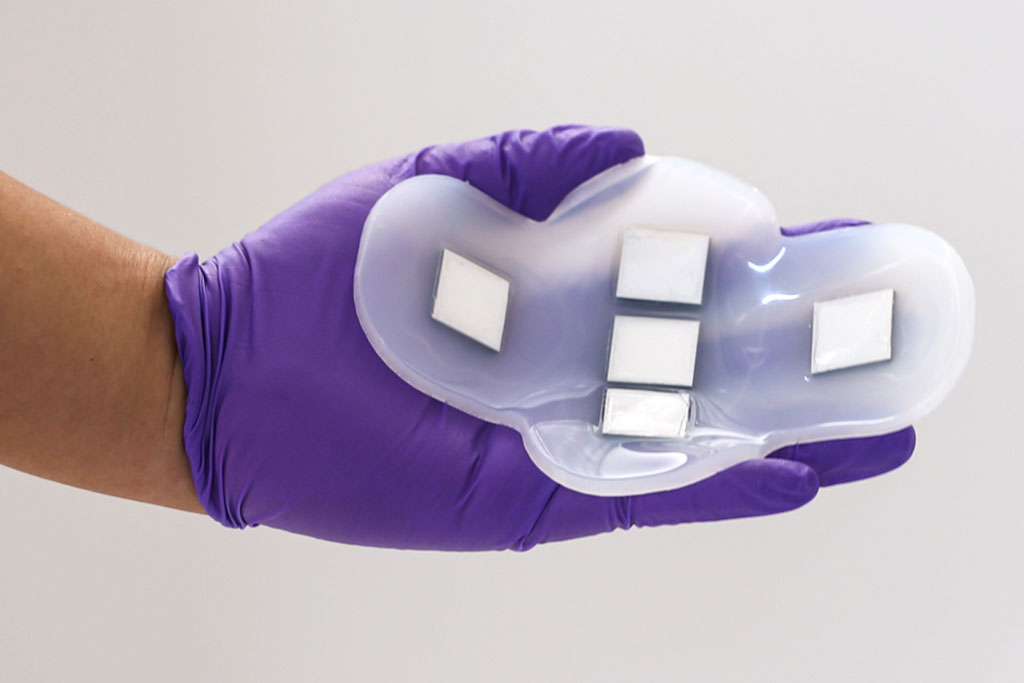Ultrasound Patch Designed to Monitor Bladder and Kidney Health Could Enable Earlier Cancer Diagnosis
Posted on 22 Nov 2023
Bladder dysfunction and related health issues affect millions worldwide. Monitoring bladder volume is crucial for assessing kidney health. Traditionally, this requires a visit to a medical facility and the use of bulky ultrasound probes. However, researchers have now developed an innovative ultrasound patch that can measure bladder fullness. This wearable technology is not only helpful for tracking bladder and kidney health but could also be adapted for early detection of cancers deep within the body like ovarian cancer.
A research team at MIT (Cambridge, MA, USA) has created a wearable ultrasound monitor in the form of a patch. This patch can image internal organs without the need for a specialist to operate it or the application of ultrasound gel. Their study demonstrated the patch's ability to accurately image the bladder and assess its fullness, offering a new way for those with bladder or kidney disorders to monitor their organ function. The technology can also be modified to image other organs by adjusting the ultrasound array's location and signal frequency. This adaptation could facilitate the early detection of cancers within the body.

To create this wearable ultrasound monitor, the researchers used silicone rubber to make a flexible patch, embedding it with five ultrasound arrays crafted from a newly developed piezoelectric material. These arrays are arranged in a cross pattern, enabling the device to image the entire bladder, which measures about 12 by 8 centimeters when full. The patch's polymer material has a natural stickiness, gently adhering to the skin for easy application and removal. Once in place, clothing like underwear or leggings can help secure it.
In their study involving 20 participants with various body mass indexes, the researchers conducted bladder imaging at different fullness levels. The results showed that the patch's images were on par with those from traditional ultrasound equipment, and the ultrasound arrays effectively worked for all participants, regardless of body mass index. This patch eliminates the need for ultrasound gel or applying pressure, as is typical with traditional probes, thanks to its wide field of view.
The MIT researchers are currently developing a compact, smartphone-sized device to view the images captured by the patch. They also aim to expand this technology to image other internal organs, such as the pancreas, liver, or ovaries. This will involve designing new piezoelectric materials to adjust the ultrasound frequency based on each organ's specific location and depth. In some cases, particularly for organs deep within the body, an implantable version of this device might be more effective than a wearable patch.
“This technology is versatile and can be used not only on the bladder but any deep tissue of the body. It’s a novel platform that can do identification and characterization of many of the diseases that we carry in our body,” said Canan Dagdeviren, an associate professor in MIT’s Media Lab and the senior author of the study.
Related Links:
MIT














